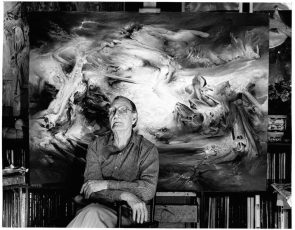The Oral History of Aussie Art
Produced by David Ward on June 21, 2017
Tags - Art - Art History - Collection - James Gleeson - National Gallery Australia - Oral History Collection

The value of Oral history is that it doesn’t just record what happens, but it also gives us a window into why it happened.
One of the best Australian examples of oral history being used to explore the thinking, the ideas, and the attitudes that often lie hidden would have to be the James Gleeson Oral History Collection held at the National Gallery of Australia (NGA).
In the 1970s, one of Australia’s most important and well known painters, surrealist James Gleeson, began recording interviews with nearly 100 different Australian artists whose works had been acquired by the NGA. Gleeson’s aim was to explore how these prominent and significant artworks were created and the ideas and influences that contributed to their creation and production.
While only short (often less than 5 minutes each), the interviews that Gleeson conducted are accompanied by over 2000 reference photos of the artworks, and, as a collection, provides valuable insight into the way many well known Australian artists – including Sir Russell Drysdale, Lyndon Dadswell, Grace Crowley, Elaine Haxton and Albert Tucker to name a few – went about their work.
If you’re interested in finding out more of the story behind some of Australia’s most famous pieces of art and seeing how oral history can help us to both preserve and better understand our history, head on over to the James Gleeson Oral History Collection, at the National Gallery of Australia